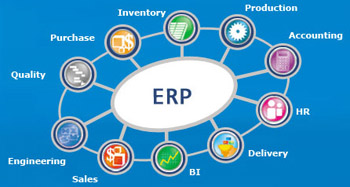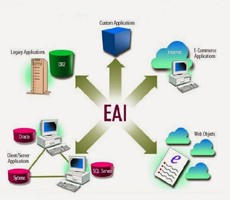ERP/ EAI

Enterprise Resource Planning
ERP provides an integrated view of core business processes, often in real-time, using common databases maintained by a database management system. ERP systems track business resources—cash, raw materials, production capacity—and the status of business commitments: orders, purchase orders, and payroll. The applications that make up the system share data across the various departments (manufacturing, purchasing, sales, accounting, etc.) that provide the data. ERP facilitates information flow between all business functions, and manages connections to outside stakeholders
Enterprise system software is a multi-billion dollar industry that produces components that support a variety of business functions. IT investments have become the largest category of capital expenditure in United States-based businesses over the past decade. Though early ERP systems focused on large enterprises, smaller enterprises increasingly use ERP systems.

Enterprise Application Integration
Enterprise application integration (EAI) is the process of allowing two or more enterprise systems to operate as one. Most EAI offerings include software, hardware, and services. Typically, EAI systems are used to integrate incompatible systems—such as an older system in which a major investment has already been made, commonly referred to as a legacy system, and a newer application, such as a customer resource management (CRM) system—within a single business. However, EAI systems are also used with increasing frequency to integrate the enterprise systems of various companies to allow business transactions between enterprises to take place electronically.








